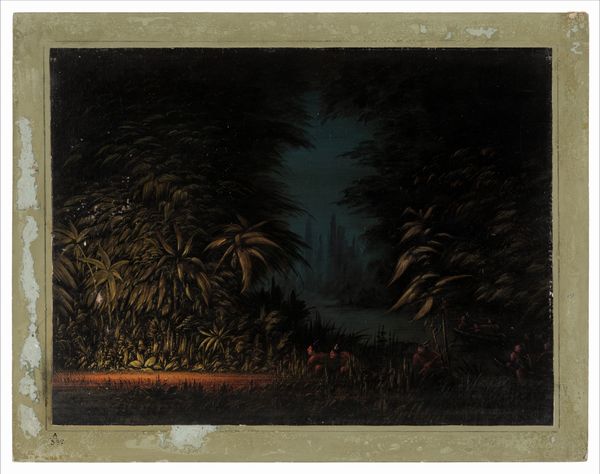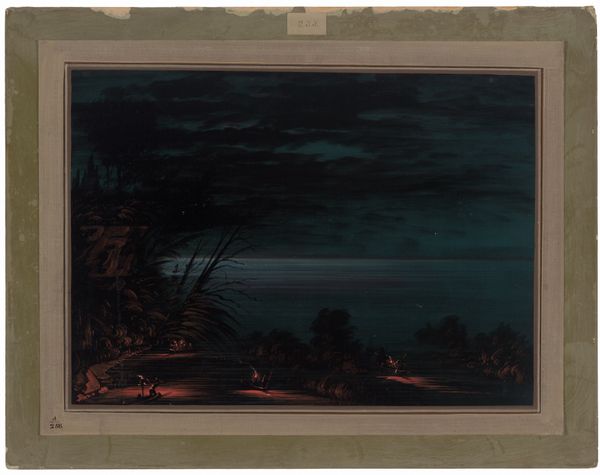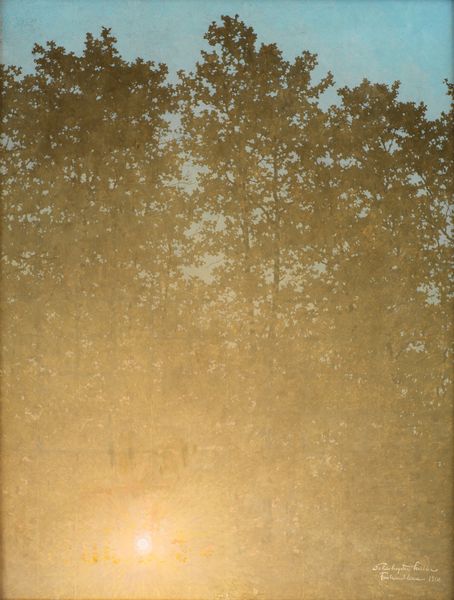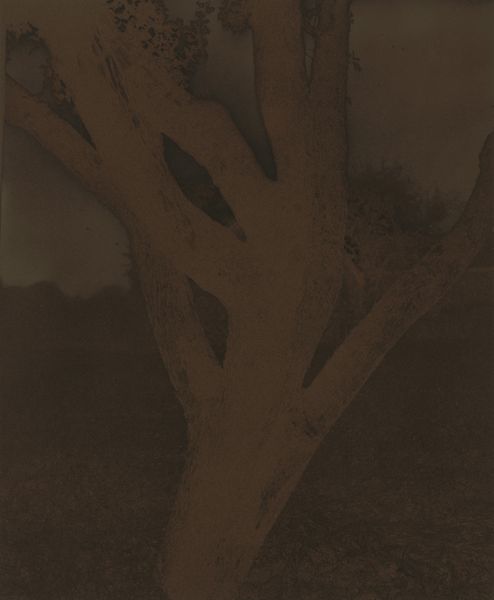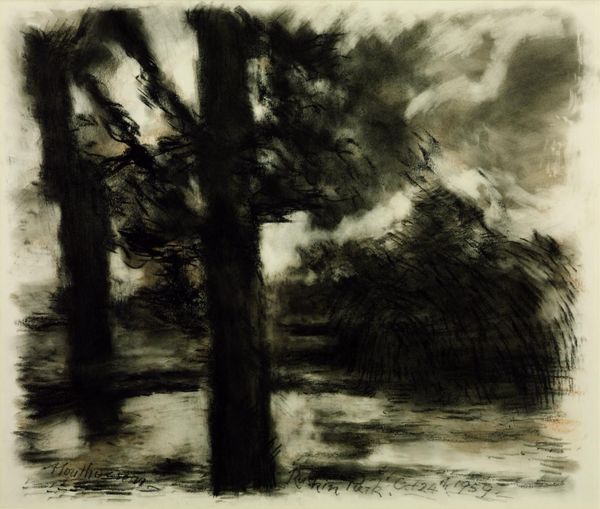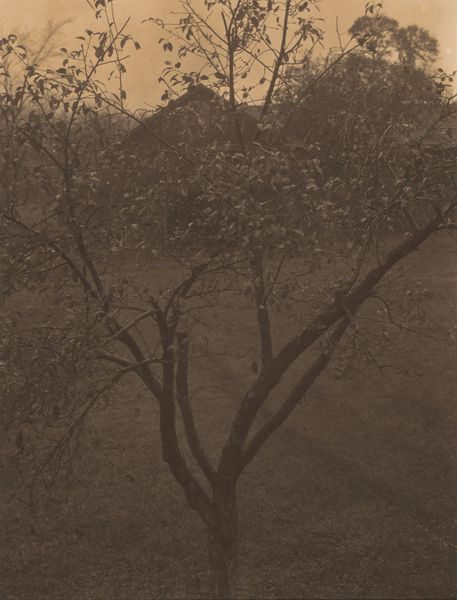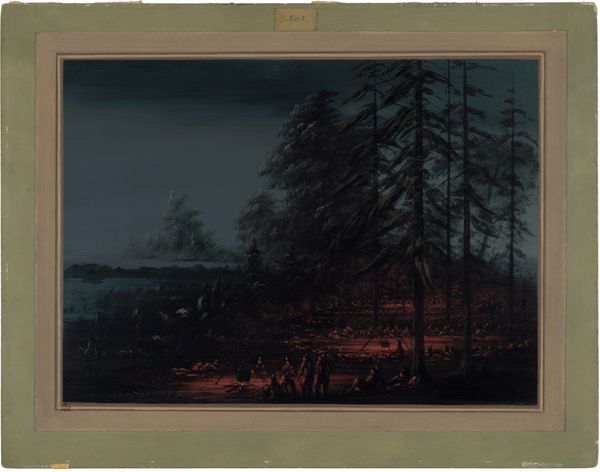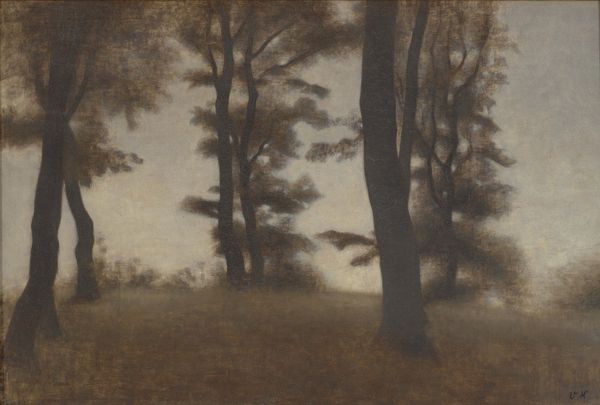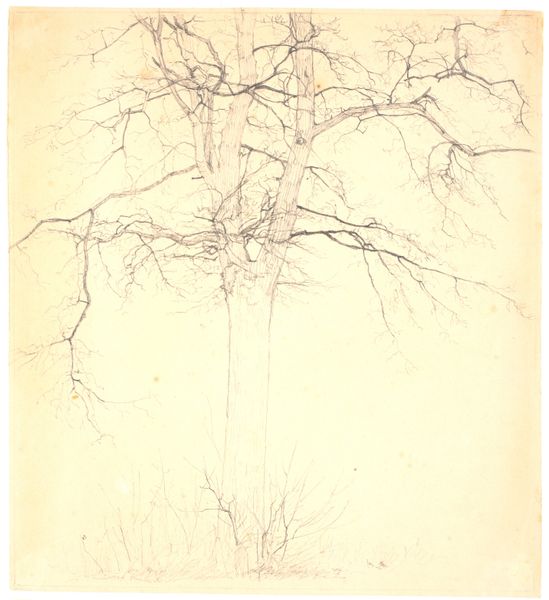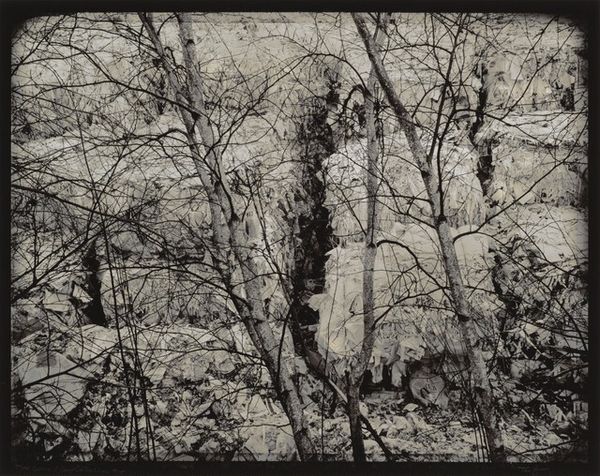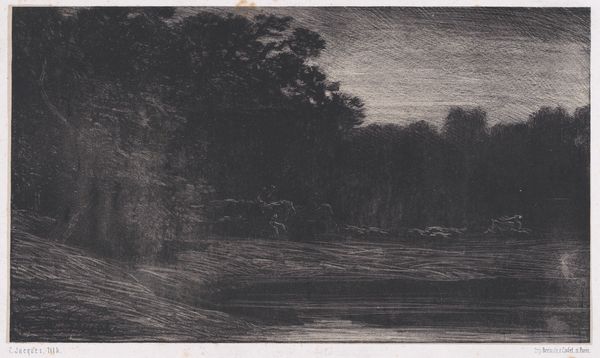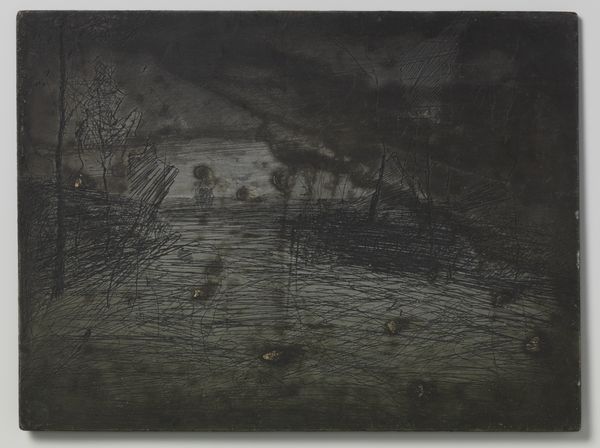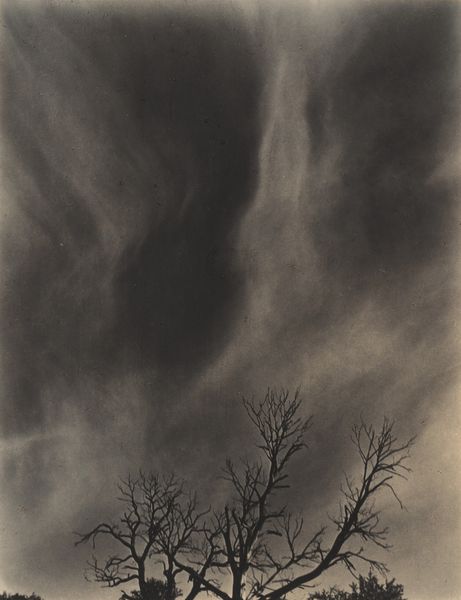
Dimensions: overall: 46.6 x 62.2 cm (18 3/8 x 24 1/2 in.)
Copyright: National Gallery of Art: CC0 1.0
Curator: What a somber yet captivating piece! This watercolor painting, dating roughly between 1854 and 1869, is titled "Ignis Fatuus, Rio Uruguay," and the artist is George Catlin. It certainly pulls you in. Editor: Yes, a first impression speaks to its dramatic use of light. It feels almost like peering into the unknown. The deep shadows are only pierced by this mysterious, ethereal glow. Curator: The very title "Ignis Fatuus" provides an interesting layer. It translates to "foolish fire," referring to a will-o'-the-wisp, a phosphorescent light seen hovering over swamps or marshes. Catlin was very concerned with illuminating vanishing native lifeways and their treatment through the Westward expansion of colonial America. We have to interpret this Romantic-style painting in the context of colonial America, its treatment of indigenous peoples, its politics of erasure. Editor: That connection really shifts how I view the glow, making the wisps something perhaps related to lost souls rather than a source of guiding illumination. Can this body of water serve as an artery towards progress, if, in fact, it takes one into deeper darkness? Curator: Exactly. The social history here is potent. Catlin’s overall project involved depicting Native American life during a period of tremendous upheaval due to government policies, such as the Indian Removal Act. So the artistic gesture of representation itself comes into focus, its limits as well as potential. We have to wonder how he positions himself as both a narrator of Native American history and a contributor to its problematic imagery. Editor: His role becomes entangled within the socio-political dynamics of that time. And it feels fitting that this artwork appears as a sort of portal for difficult questioning, considering the historical background. Curator: I agree. And the title becomes ever more critical, especially as we see land, politics, indigeneity and colonial structures reflected. The artist sheds some "foolish fire" that hopefully guides the public sphere. Editor: Indeed, the light encourages that reflective exercise, turning viewers to consider how art participates in difficult national narratives. Thank you for those insights. Curator: And thank you for sharing in the visual questioning of Catlin's "Ignis Fatuus, Rio Uruguay."
Comments
No comments
Be the first to comment and join the conversation on the ultimate creative platform.
